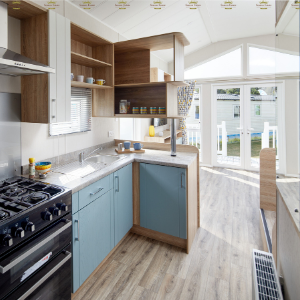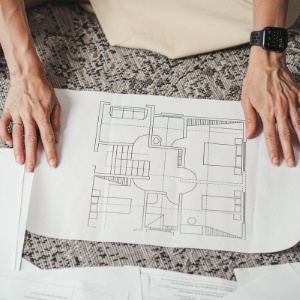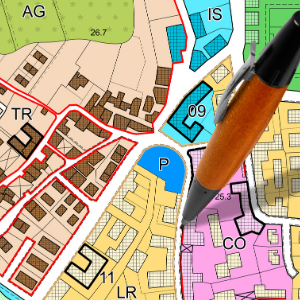
Understanding Single Wide Mobile Home Dimensions
Anyone interested in owning or living in a single-wide mobile home must first understand its dimensions. These mobile homes are recognized for their small and efficient design, measuring 14 to 18 feet wide and 60 to 90 feet long.
This streamlined size makes them excellent for tiny pieces of land and more portable than larger variants. The width of a single-wide mobile home significantly impacts the interior layout, affecting room proportions, hallway space, and general comfort.
With advancements in manufacturing technology, modern single-wide mobile homes frequently have open floor plans that utilize available space while remaining functional. Buyers must carefully analyze these dimensions to verify that the home meets their lifestyle goals and any zoning or lot size constraints that may apply.
If you’re considering upgrading to a different size or relocating, Mobile Home Cash Offer makes it easy to sell your mobile home for cash in North Carolina. Their hassle-free process ensures you can move forward confidently, whether you’re downsizing or simply looking for a change of scenery.
Key Features of Single Wide Mobile Homes
Single-wide mobile homes are outfitted with unique characteristics that promote efficient and cheap living. These dwellings, which range in width from 14 to 18 feet, provide a tiny but functional architecture that is excellent for small families or individuals.

Despite their smaller footprint, single-wide mobile homes maximize space with open floor layouts that seamlessly integrate the living, kitchen, and dining areas. Many models include energy-efficient windows and modern appliances, which improve comfort while lowering utility bills.
Bedrooms and bathrooms are often intentionally positioned to maximize seclusion while maintaining accessibility. Furthermore, single-wide mobile homes are built with long-lasting materials that withstand harsh weather conditions.
Their mobility feature provides another level of convenience, allowing residents to relocate without the difficulties of regular homes. These critical elements make single-wide mobile homes appealing to individuals seeking cost without sacrificing necessary conveniences or quality of life.
Benefits of Choosing a Single Wide Mobile Home
Opting for a single-wide mobile home has various advantages, making it an appealing option for many homeowners. One key benefit is affordability, as single-wide mobile homes are often less expensive than larger counterparts. This makes them perfect for first-time purchasers and those on a tight budget.
Furthermore, the compact width of single-wide mobile homes allows them to fit into smaller parcels of ground, giving them greater choice in location and perhaps lowering land prices. This innovative use of space also translates into decreased utility costs, as heating and cooling a smaller area can be much less expensive.
Single-wide mobile homes are noted for their streamlined form, which frequently means less maintenance and upkeep than bigger homes. Furthermore, these homes provide a comfortable and controllable living environment that requires less cleaning while still providing all the facilities.
Single-wide mobile homes offer comfort and flair without sacrificing functionality, thanks to modern designs that make imaginative use of space and employ high-quality materials. Their portability facilitates migration if necessary, providing increased mobility and adaptability to lifestyle changes or job opportunities.
Comparison of Single and Double-Wide Mobile Homes
Single-wide and double-wide mobile homes vary significantly in size, layout, and functionality. Single-wide mobile homes typically range in width from 12 to 18 feet and feature an extended, narrow floor design that maximizes space efficiency in a small footprint.
This makes them perfect for individuals or small families looking for low-cost homes with minimum maintenance. In contrast, double-wide mobile homes provide more expansive living spaces by joining two single units to form a residence typically 20 to 32 feet wide.
This expanded breadth enables larger rooms, amenities, and a more traditional home-like atmosphere. Because of the added square footage, double-wides can offer more customization options and more comfort.
However, they demand greater land space and may incur more transportation and setup costs. When picking between these two types of manufactured homes, economic limits, lifestyle needs, and available lot sizes are critical factors in determining the best option for potential homeowners.
Common Floor Plans for Single-Wide Mobile Homes
Single-wide mobile homes are popular because they are affordable and use space well. They provide a variety of floor plans to meet diverse purposes. These small dwellings are typically 14 to 18 feet wide and up to 90 feet long, optimizing living space on a single floor.

Standard floor designs typically have two or three bedrooms, with the main bedroom positioned at one end for solitude. Open-concept designs are popular, with a combined living room and kitchen area that increases the sensation of space.
Many versions contain plenty of natural light through strategically placed windows, making the space feel larger and more inviting. Kitchens in single-wide mobile homes typically have basic appliances and may incorporate an island or breakfast bar for additional dining options.
These residences typically have one to two bathrooms, with some layouts including an en-suite bath linked to the main bedroom for added convenience. Storage solutions like built-in closets and shelves are carefully incorporated into the design to make the most of every square foot.
Overall, single-wide mobile home floor plans prioritize functionality while creating a comfortable living environment for current lifestyles.
Cost-Effective Living: The Economics of Single-Wide Mobile Homes
Single-wide mobile homes are an affordable housing option for individuals and families. These compact buildings are often less expensive than traditional or larger manufactured homes, making them appealing to frugal consumers.
A single-wide mobile home has a reduced initial purchase price, reducing homeowners’ financial load. Furthermore, due to their modest size, single-wide mobile homes sometimes have lower utility expenses, resulting in additional savings over time.
Single-wide variants are often less expensive to maintain because of their simplicity and efficiency. For those looking to optimize value, many offer modern conveniences and customizable features at a fraction of the cost of site-built houses.
Furthermore, because these homes can be built in mobile home parks or on leased land, residents may avoid paying hefty property taxes and land acquisition fees. This economic advantage enables owners to allocate money more effectively toward other financial objectives while enjoying the comfort and convenience of their own space.
Energy Efficiency in Modern Single Wide Mobile Homes
Energy efficiency has become a key consideration in the design and construction of modern single-wide mobile homes. Insulation material advancements, such as high-performance fiberglass and foam, considerably minimize heat loss and improve thermal regulation, ensuring that these homes remain comfortable all year.
Energy-efficient windows with low-emissivity coatings help reduce heat transfer, while energy-efficient doors serve as excellent draft barriers. Many manufacturers now use energy-saving equipment and LED lighting to reduce energy use further.
Furthermore, smart home technology enables homeowners to monitor and optimize their energy consumption better. These features cut utility costs and contribute to a smaller environmental footprint, making single-wide mobile homes an appealing choice for environmentally conscious buyers.
Buyers can be confident that their mobile homes fulfill demanding efficiency and environmental standards set by organizations such as ENERGY STAR®.
Design Trends for Single-Wide Mobile Homes
In recent years, design trends in single-wide mobile home interiors have shifted substantially, focusing on optimizing space and improving functionality. Modern single-wide mobile homes frequently have open floor designs that smoothly connect living, dining, and kitchen rooms, producing a more spacious sense despite their limited width.
Contemporary design elements such as minimalist cabinetry, smooth counters, and versatile furniture are popular choices that help better use space. Light color palettes are typically used to make interiors appear larger and brighter, and properly positioned windows allow natural light to permeate the space.
Innovative storage options, such as built-in shelves and under-bed compartments, help to reduce clutter while maintaining style. Furthermore, designers increasingly incorporate eco-friendly materials and energy-efficient appliances into single-family houses to appeal to environmentally aware buyers.
Innovative technology is also gaining popularity, enabling homeowners to control their lighting, temperature, and security systems simply. These design ideas boost the visual appeal of single-wide mobile homes while increasing their general livability by taking advantage of their small dimensions.
Space Optimization Tips for Single Wide Mobile Homes
Maximizing the limited space in single-wide mobile homes necessitates strategic planning and innovative solutions that improve comfort and functionality. One practical method is to employ multi-functional furniture, such as beds with built-in storage or foldable tables that can be stored away when unused.
Vertical storage alternatives, such as tall shelf systems and wall-mounted cabinets, help to maximize floor space while keeping possessions tidy. Light hues on walls and floors can provide more space, while strategically placed mirrors magnify natural light and lend depth to interiors.
Reducing clutter by implementing a minimalist design approach is also advantageous, focusing on the necessary things that fulfill several functions. Using underutilized places, such as those beneath stairs or above cupboards, maximizes available space.
These space-saving solutions convert single-wide mobile homes into efficient, comfortable living spaces without sacrificing flair or functionality.
Resale Value Considerations for Single Wide Mobile Homes
A handful of key factors can quietly, yet powerfully, influence how much you’ll get for your single-wide mobile home when it’s time to move on. First and foremost, the home’s overall condition matters more than you might think. A unit that’s been consistently cared for, complete with fresh appliances and neat finishes, is likely to attract more serious buyers—and better bids.
Next up is location. Mobile homes parked in well-kept, amenity-rich communities tend to hold much better value than those in less desirable settings. The age of the unit also plays a role; newer models with sleek, energy-efficient materials and innovative layouts can carry a premium that older homes simply can’t.
While it may seem minor, width can influence how spacious buyers perceive the floor plan. A slightly wider single-wide usually feels roomier and can tip the scale in your favor. Thoughtful interior and exterior upgrades—think trendy countertops or a stylish deck—can further boost that resale number, especially when they align with what buyers are currently chasing.
Lastly, tidy land ownership or lease documents calm potential buyers and pave the way for a quicker, less bumpy transaction. A well-organized sale is its kind of value-added.
Zoning Laws and Regulations for Single Wide Mobile Homes

Local zoning codes are pivotal in deciding where single-wide mobile homes may be sited, directly influencing the homes’ width and external placement. Municipal authorities craft these codes to sustain orderly mobile home parks and to ensure such residences blend well with the prevailing neighborhoods.
These codes often specify minimum parcel dimensions, required distance from property lines, and an upper limit on the home’s width, generally between 12 and 18 feet for single-wides. Future owners should carefully review the applicable ordinance in their municipality, since the particulars can differ notably from one jurisdiction to the next.
Zoning ordinances may also indicate whether single-wides must be positioned in licensed parks or whether they may be placed on privately owned lots. Awareness of these stipulations is essential for meeting legal standards and avoiding potential issues during home placement.
Following zoning requirements further guarantees that roads, drainage, and utility networks are appropriately designed for the home’s size, facilitating safe connections and preserving the neighborhood’s visual harmony.
How Wide Is a Normal Single-wide Mobile Home?
A standard single-wide mobile home measures between 14 and 18 feet across, presenting a practical, budget-friendly living option for various households. For future homeowners, grasping this width helps them balance living space and the legal limits for transporting the unit down the road.
The consistent width means these homes can easily ride flatbed trailers and cruise highways without special transport permits. That typical 14-to-18-foot span opens up a design layout roomy enough for essential plumbing, electrical, and HVAC systems without wasted space.
Brokers and buyers alike benefit from having precise measurements on hand. Knowing the exact width helps ensure the home parks squarely on a lot and meets licensing and zoning rules in the area. Since a handful of inches can hinge on a company’s design catalog or a state’s driveway statute, reaching out to dealers for the latest single-wide specs is always a wise first step.
Are All Single Wides the Same Width?
It’s a relevant question when diving into single-wide floor plans. The short answer is no; widths fall along a spectrum. Mobile home manufacturers, base design variations, and local building codes influence the final dimension, meaning buyers will find 14-foot, 16-foot, and sometimes 18-foot options on dealer lots.
Single-wide mobile homes usually measure between 12 and 18 feet across, although a few designs stretch a bit wider to meet unique living requirements or stylistic choices. This range allows owners to select a size that aligns nicely with their habits and the available land.
Before buyers hand over a deposit or plan the home’s site, it’s wise to pay attention to this variation in width. Knowing that single-wides come in different measurements helps future owners tailor their choices to the square footage they need and the budget they’ve set.
Is a 16×80 Mobile Home Single or Double Wide?
Although its length might suggest otherwise, a 16×80 mobile home is classified as a single-wide. Given their narrower profile, these models remain cost-effective and straightforward to place.
Standard single-wide widths run from 14 to 18 feet, and the 16-foot dimension squarely lands the home inside this bracket. The design accommodates necessary rooms efficiently, compressing everything into a smaller base.
For house hunters, grasping single-wide measurements is vital in weighing roominess against the budget. The 16×80 configuration delivers comfortable surrounds for one or a couple of family members while remaining within the reach of the price-conscious.
How Big Is a 14×70 Mobile Home?
The 14×70 single-wide mobile home continues to enjoy popularity among buyers and those updating rental fleets, balancing affordability and functionality. Familiarity with its size simplifies decisions related to room placement and style.
The floor plan measures 14 feet in width and 70 feet in length and produces close to 980 square feet. This area comfortably accommodates the usual sites of everyday life: a few bedrooms, a compact kitchen, a living room, and a couple of bathrooms, while maintaining a manageable overall size.
This mobile home’s width creates comfortable pathways throughout, keeping the area airy. Familiarizing yourself with this dimension is key when buying or designing a single-wide so you can stretch every square foot to fit how you want to live.
Grasping the overall 14×70 footprint helps buyers evaluate different layouts and consider future tweaks, leading to spaces that truly feel like home and are easy to navigate.
Whether you’re evaluating a single-wide or ready to move on, Mobile Home Cash Offer makes it easy with fair, no-obligation cash offers—perfect if you’re looking to sell your mobile home for cash in Tennessee or North Carolina. It’s fast, friendly, and hassle-free. Contact us at 214-444-6375 today to get your offer!
Helpful Mobile Home Blogs
- Why is selling a mobile home so hard?
- Can You Sell a Mobile Home in a Flood Zone
- What Happens To Your Mobile Home During An Eviction?
- Can A Mobile Home Park Legally Seize Your Home?
- Do You Need A Lawyer To Sell Your Mobile Home?
- Expert Guide To Mobile Home Appraisals
- Legally Removing A Mobile Home From Your Property
- How to Sell a Mobile Home With a Lien
- Selling A Mobile Home Without Inspection
- What Does A Mobile Home VIN Number Look Like
- Selling a Mobile Home That Needs Repairs
- Selling a Mobile Home with Mold Issues
- Can You Sell a Mobile Home Without a Title?
- The Complete Guide to Selling an Inherited Mobile Home
- How Much Does It Cost to Move a Mobile Home in 2025
- Can You Transfer a Mobile Home Title Online?
- How to Sell a Mobile Home Without Land Fast
- How to Winterize a Mobile Home That Is Vacant
- Top Flooring Choices For Enhancing Your Mobile Home
- Guide To Repairing And Maintaining Mobile Home Furnaces
- Understanding Mobile Home Park Lot Rent
- Mobile Home Dealer Vs. Real Estate Agent
- Effective Strategies For Preventing Water Leaks In Mobile Homes
- Understanding The Width Of Single-Wide Mobile Homes
- Discovering The Manufacturing Date Of Your Mobile Home

| MORTGAGE | MORTGAGE LENDING | SQ. FT. | CEILING | DATA | ROOF |
| HOMEBUYERS | LENDING | LOAN | FACTORY | HUD | |
| TRANSPORTATION | REFINANCING | REFINANCE | PORCHES | NMLS | GARAGES |
| DOWN PAYMENT | CHILDREN | CRAWL SPACE | OF MOBILE HOMES | A MOBILE HOME |
